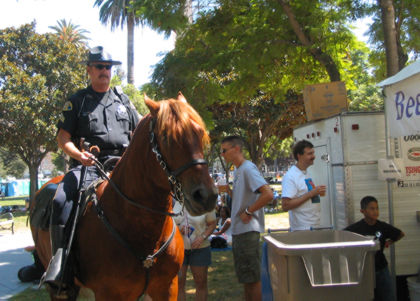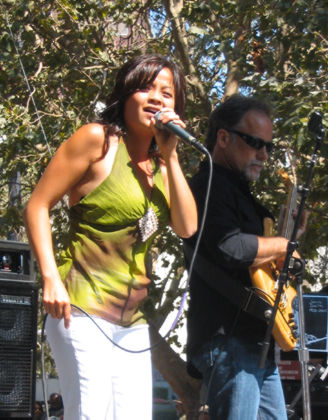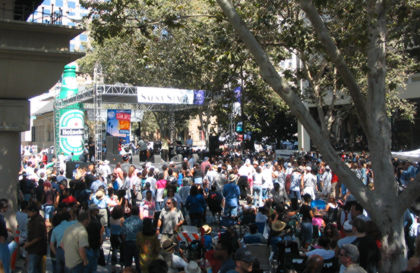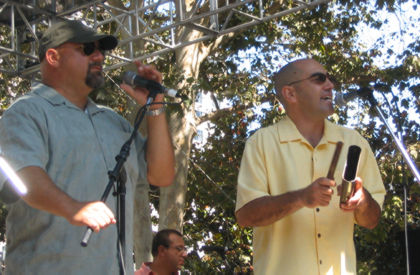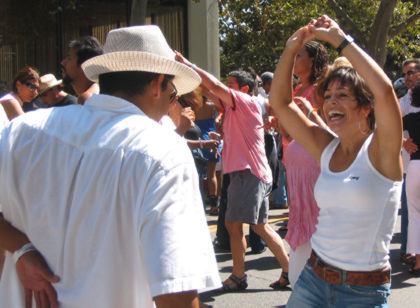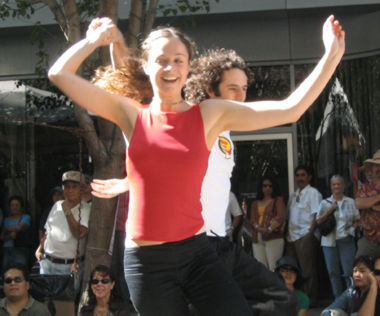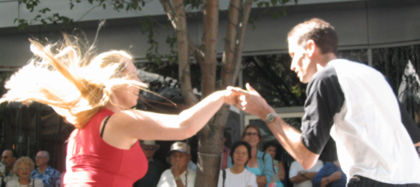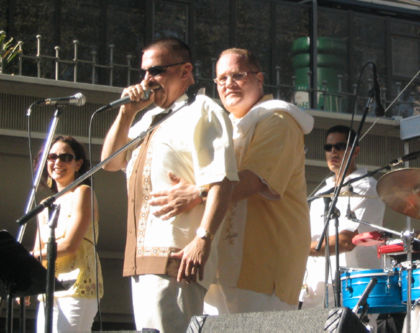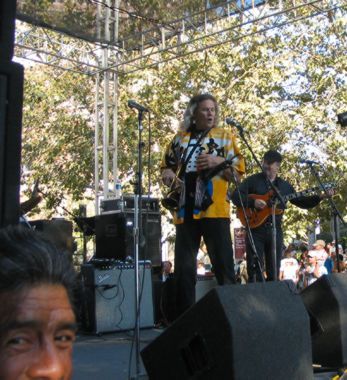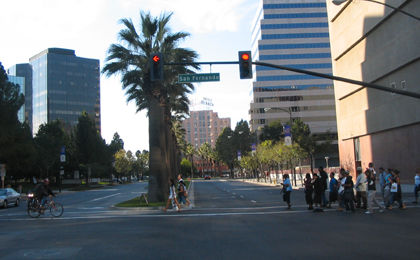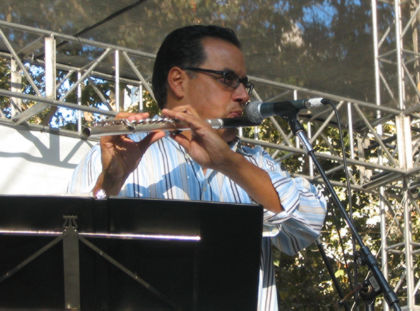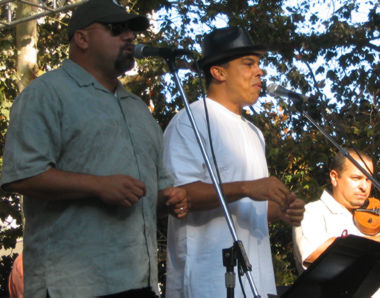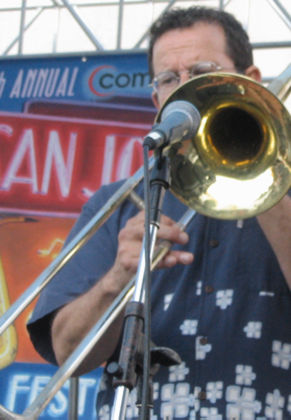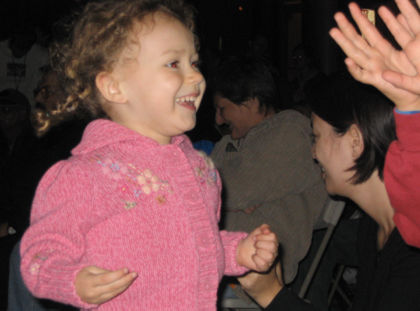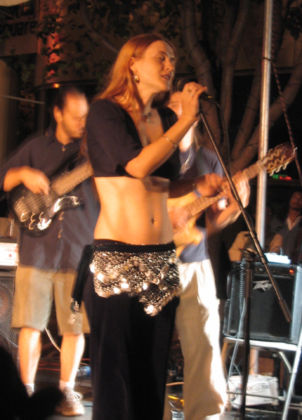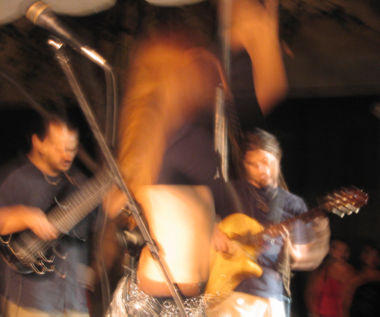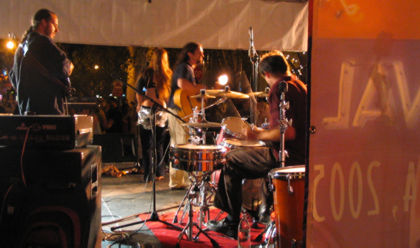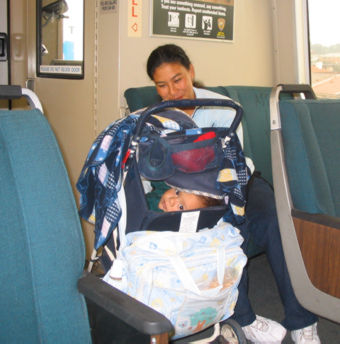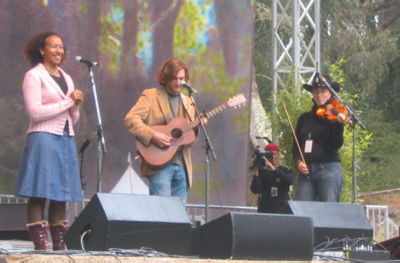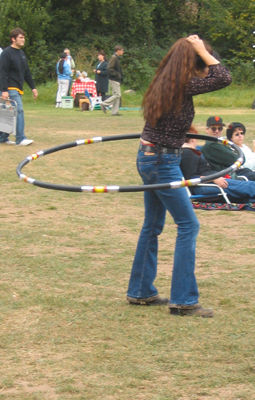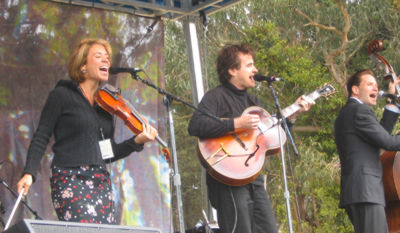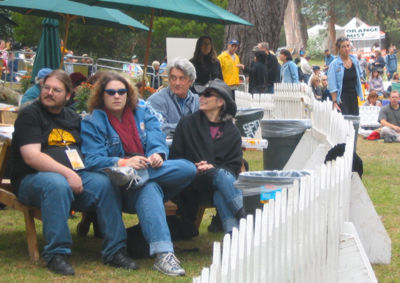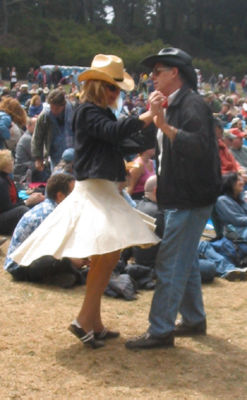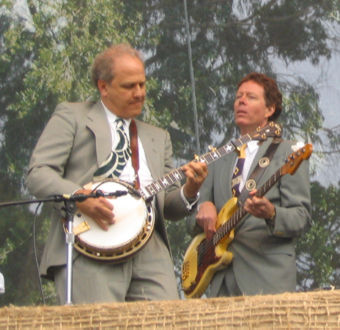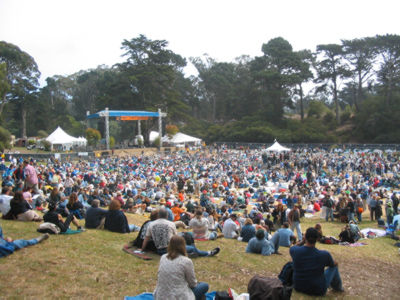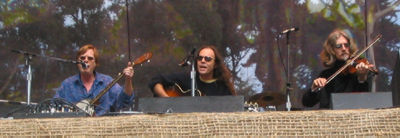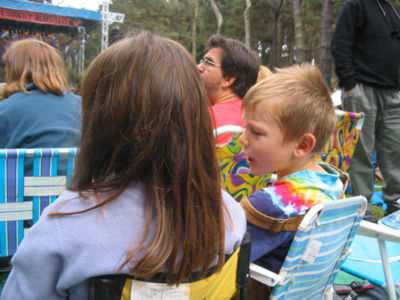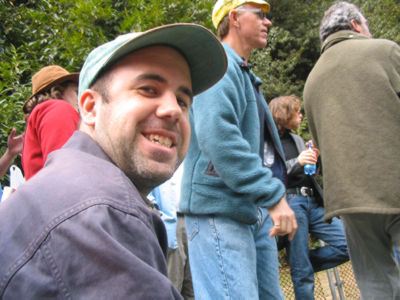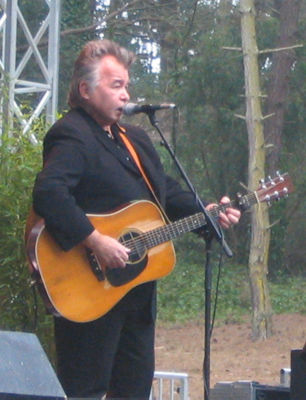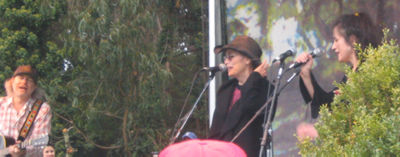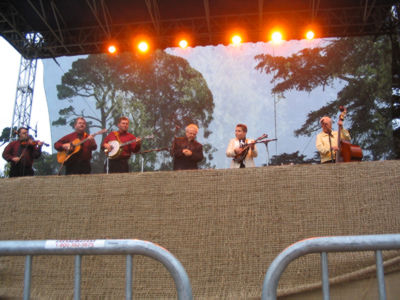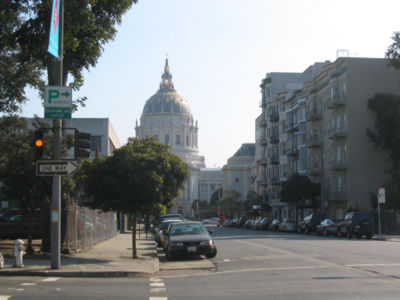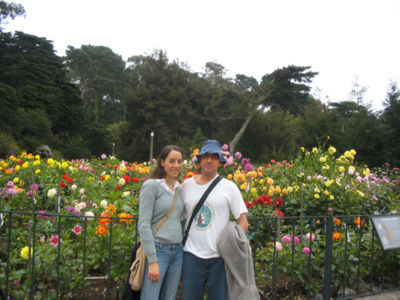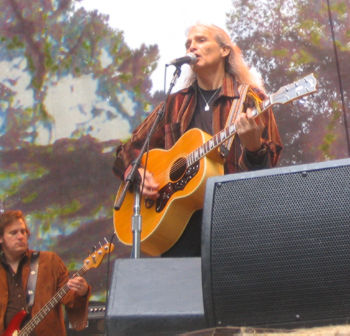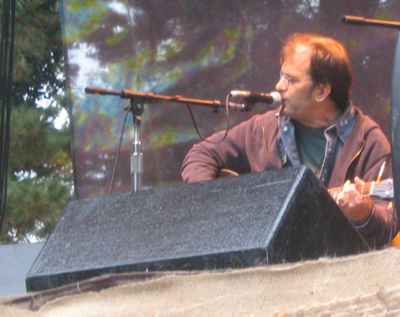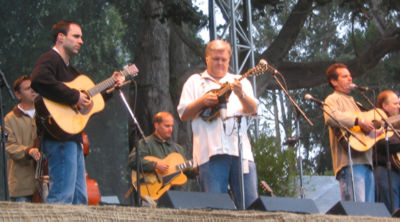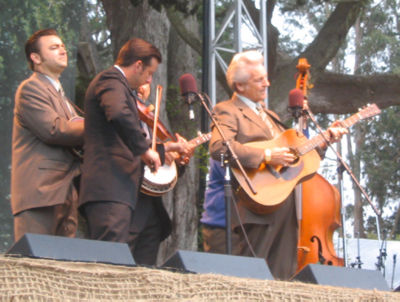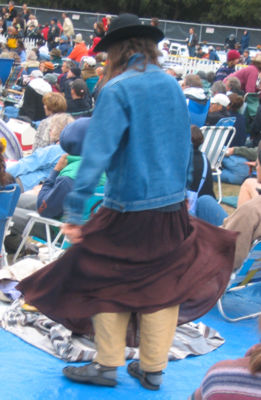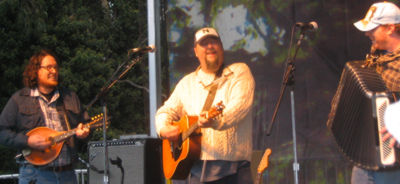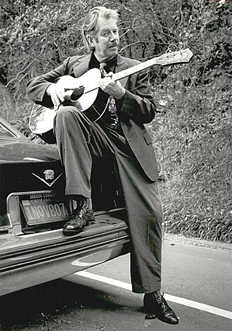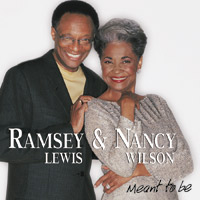It’s Van Halen like it used to be. Not better, necessarily, but most importantly, not worse.
VH put out one killer album in the late 1970s, a disappointing one after that, and a couple pretty good ones up to the mid-’80s. Then they got stupid, dumped their insufferable lead singer and spent two decades proving that even with a guitar god like Eddie Van Halen at the helm and his amazing brother Alex on drums, they really, really needed David Lee Roth’s vocals and cock-rock theatrics.
This year they got wise, and went on tour. Anybody who remembers getting a shiver at the base of their spine the first time they heard the thunderous opening to “Running With the Devil” on that first album needs to get out and and see ’em while they’re hot and before, if their track record is any guide, they implode again.
Eddie is clean, sober and soloing like you wouldn’t believe. Roth is looking old and slightly ridiculous strutting his stuff like he’s 22 and no teen-age girl is safe, but his voice is fresh and strong. He hits those notes he hit in 1978. Maybe he rested his vocal cords all those years Van Hagar was mucking up the reputation of one of the great American guitar bands. Alex is impressive, and Eddie’s 16-year-old son, Wolfgang, does fine on bass.
They’re playing almost every song on their debut album and perhaps a few from each of the ones after that. The first was that much better than the rest, so that’s not much of a surprise. The real surprise came about nine songs in — opening with the Kinks’ “You Really got Me” and ripping through “Runnin’ With the Devil” proved to be mere early-round warm-ups to a rousing “Everybody Wants Some” from “Women and Children First,” their third album. It was my favorite song of the night.
Somewhere in there, they slipped in “Dance the Night Away,” the radio-friendly hit single from the second album that utterly betrayed the promise of the first. It’s better in concert, I admit, but I’ll always associate it with the disappointment of discovering VH’s sophomore effort was a dim shadow of their debut. Hey, in 1979 these were matters of some import to teen-age boys who required songs about sex, girls and the hope of getting some.
After about an hour it was starting to look like they were checking required songs off a list, then everybody left the stage as if it was an encore. Then Roth came out alone with an acoustic guitar and started into a monologue about how he got into the music biz over 30 years ago, how he and his pals got stoned in a Pasadena basement, how he met a girl … it rambled a bit but but the payoff was “Ice Cream Man,” an old blues cover and one of VH’s best songs. Funny, sexy and delivered as only Roth could. All previous excesses were immediately redeemed.
Later, Eddie’s solo moment lasted more like 20 minutes … should’ve gotten tedious, I suppose, but he’s just so damned superior at it. You don’t complain in the presence of greatness. The solo paved the way for a pounding, spot-on rendition of “Ain’t Talkin’ ‘Bout Love,” the most muscular tune from that debut album. They really could’ve closed the show there, but obligingly played “Jump,” their biggest hit before Roth flew the coop. It was passable, which was good in a way because it let folks catch their breath and eased them toward the exits.
I had a free ticket to the show and had to be persuaded to go along. Van Halen isn’t a band I think about much anymore, beyond fond memories of the greatness of that debut album, the first record I ever owned (miraculously, the first stereo speakers I ever owned survived the assault). I wasn’t much much interested seeing an iconic band of my youth hitting the road as an oldies act.
It’s a credit to Eddie’s musicianship and Roth’s showmanship that they did not turn in a by-the-notes, rote recitation of their fans’ faves. They paused in the middle of songs, shifted tempos, improvised, goofed off a bit, and crafted an authentic concert. They know I know how all the songs go, I’m interested in seeing where the band goes with them.
So, yeah, they’re worth seeing on this tour — they’ve gotten raves on every tour stop — if you’re into the signature VH sound or if you’re a fan of world-class rock guitarists. It’s the Eddie and Alex Show, for sure, but something about Roth’s shameless, pile-on-the-ham stage presence completes the scene.
(Here’s another guy’s take on the concert, and here’s a set list).
